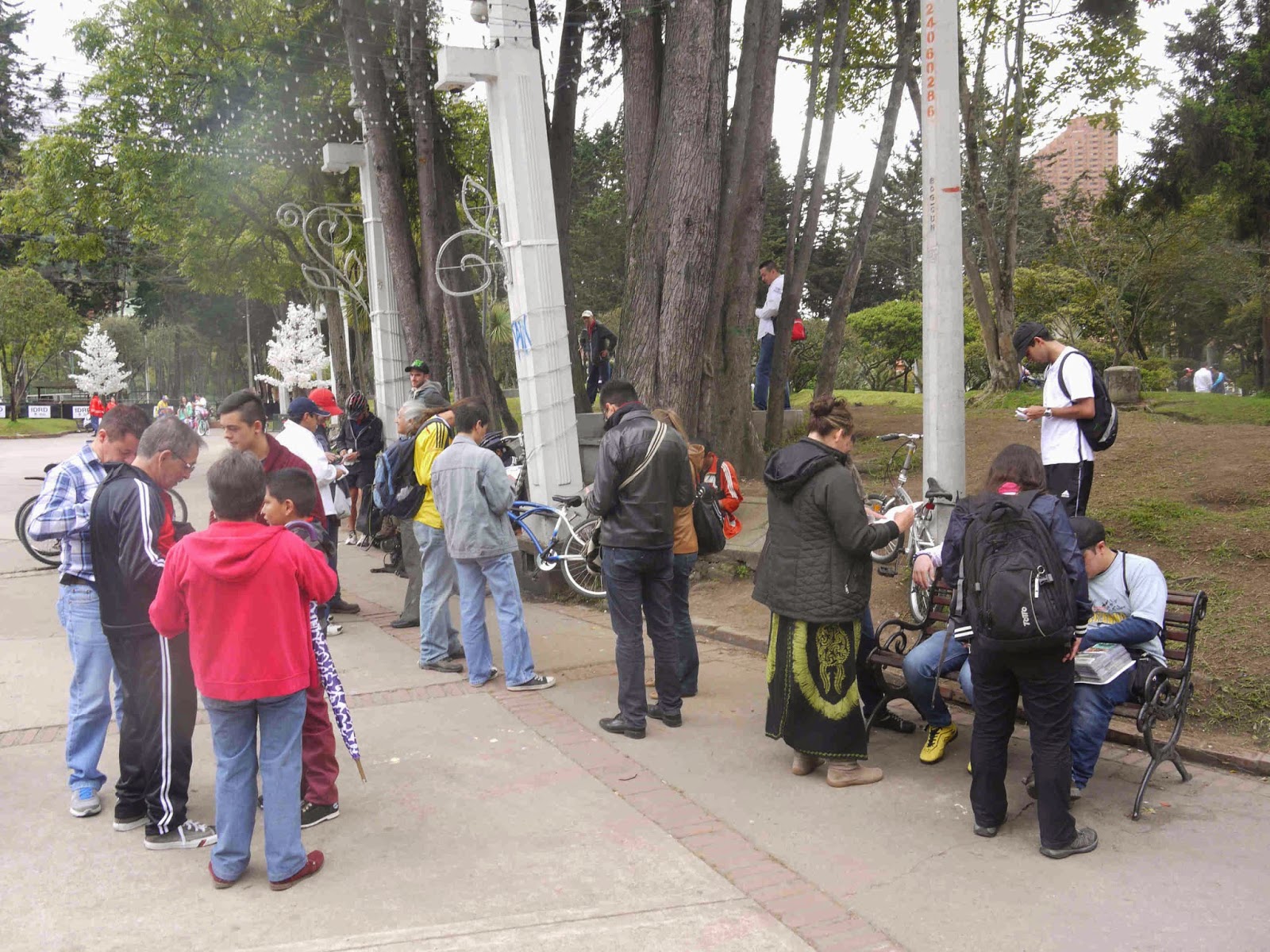 |
| El Tiempo: 'James, the personality of 2014.' |
However, it is a sad commentary on human priorities that Rodriguez is now probably the second-
 |
| El Espectador: 'James, fortune and God.' |
I'm waiting for someone to explain to me why running behind a ball - across the ocean in Spain, no less - is more important than, say, well - almost anything else.
What does the media's deification of a sports star say about its respect for science, politics, business, teaching, medicine and all those other human endeavors which produce so much to benefit us, but receive little attention or reward?
 |
| Gloria Barreto defends riot police from rioters. (Photo: El Tiempo) |
Rodriguez could employ his fame and the huge admiration he commands (justifiably or not) from Colombians of all kinds - to bring his people together to find peace, stop violence, study harder, or embrace any number of causes, but he hasn't bothered to. Instead, Rodriguez serves unintentionally as an unfortunate role model: How many boys and young men have slackened their studies and focused on futbol because they expect to become the next James Rodriguez?
 Rather than Rodriguez, how about someone like Gloria Barreto? She's the humble woman who had come to downtown Bogotá (albeit in August 2013) to complain about her water bill when she found herself in the midst of a riot in which youths hurled chairs, tables and rocks at police, who cowered behind their shields. Barreto, a short, apparently frail woman, placed herself between the police and attackers, her arms spread protectively. The rioters paused their attack only long enough to pull her away. A few moments later, an anti-riot tank arrived firing tear gas canisters, and the youths fled.
Rather than Rodriguez, how about someone like Gloria Barreto? She's the humble woman who had come to downtown Bogotá (albeit in August 2013) to complain about her water bill when she found herself in the midst of a riot in which youths hurled chairs, tables and rocks at police, who cowered behind their shields. Barreto, a short, apparently frail woman, placed herself between the police and attackers, her arms spread protectively. The rioters paused their attack only long enough to pull her away. A few moments later, an anti-riot tank arrived firing tear gas canisters, and the youths fled.But when it comes to the 'most important Colombian of 2014', love him or hate him, it's hard not to name Pres. Juan Manuel Santos. He got reelected and carried forward the peace talks with the FARC guerrillas, which appear likely to end Colombia's half-century of armed conflict. In fact, the FARC ended the year with the announcement of their first-ever unilateral cease fire - a milestone in Colombian history, even if it doesn't last.
By Mike Ceaser, of Bogotá Bike Tours


















































